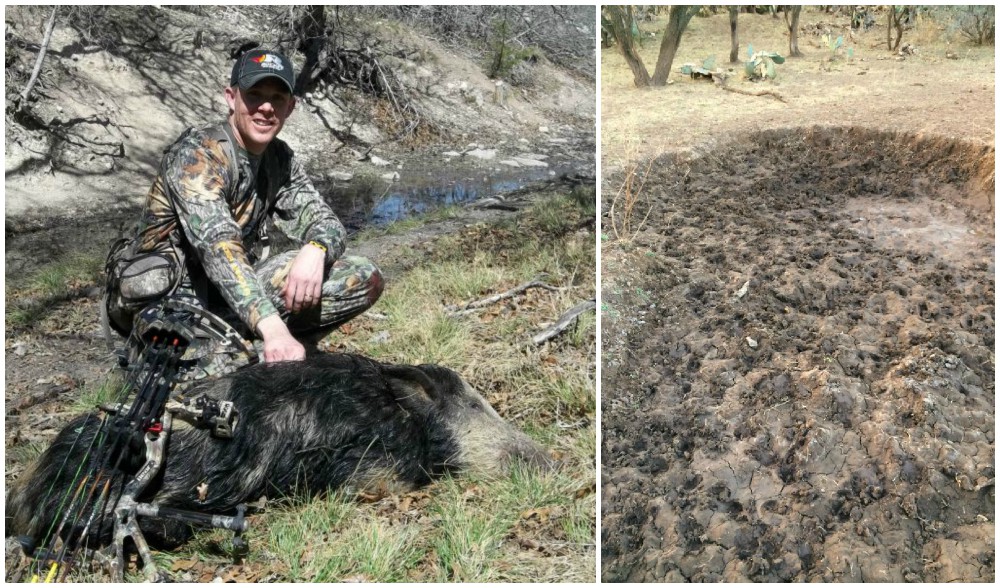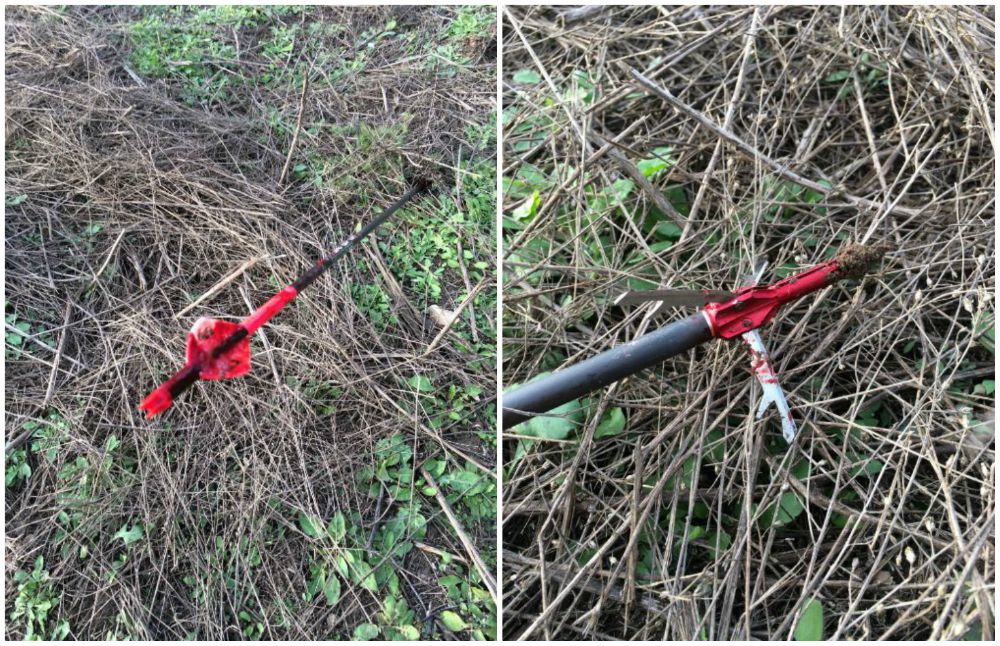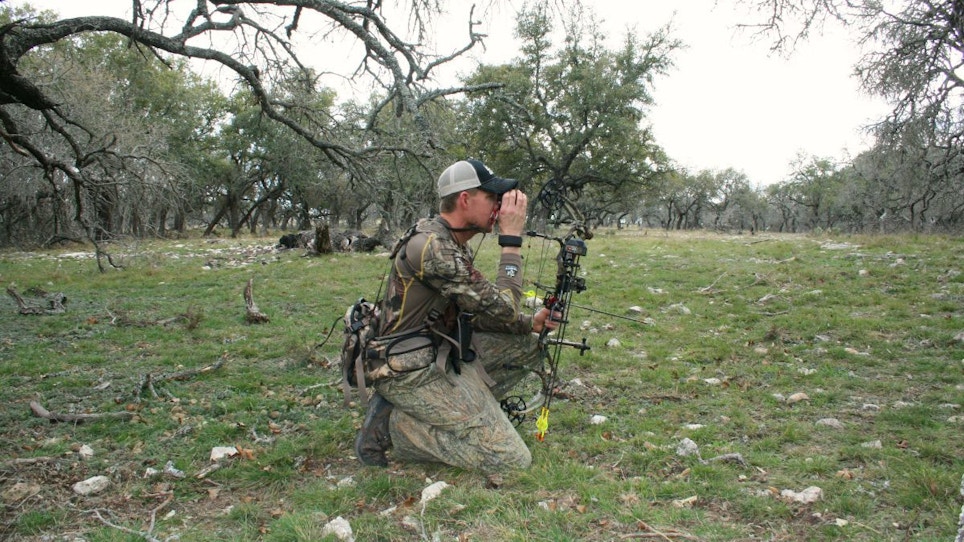This probably sounds familiar: you want to be able to control yourself during the moment of truth. You’re sick of putting your pin on hide and punching the trigger. You want to learn to control your breathing and calm your heart rate. You want to test this broadhead on something before you hunt big game with it. You want to become a better spot-and-stalk bowhunter. You want to expand your bowhunting adventures but are on a limited budget.
Well, I have the perfect solution to all of those problems: hogs.
With many ranchers, wildlife biologists and deer management landowners, the name Hernando DeSoto strikes a nerve. Why? Because in the 1500s the Spanish explorer introduced pigs to the southeastern United States. These pigs were, of course, domestic stock, but as European explorers traveled west, free-range livestock management practices and regular escapes from poorly established enclosures resulted in the establishment of wild pig populations.
Today, feral hog populations are exploding. In many states, like Texas, practices like night hunting, poisoning and helicopters are used to control the species. But what many biologists are finding out is there just may be no controlling a species where females reach sexual maturity as young as three or four months of age, are polyestrous (able to come into estrus every 18 to 24 days), and can produce litters of 10 to 12 oinkers.
Hunters are conservationists, and this is our call to action. In addition, wild hogs make great table fare, are tailor-made for bowhunting and — wait for it — are the remedy to our bowhunting problems.

Besides being a blast to bowhunt, hogs provide an economical way to learn to control buck fever. That should make the moment of truth much more manageable in the future.
Buck Fever
Go ahead, tell me you don’t have it. That you’re cool as a cucumber when that giant buck steps into your shooting lane. I could tell you the same, but I’d be lying. My heart rate jumps, my breathing quickens and I tend to shake a bit. The difference BH (Before Hogs) was that I would let the rapid heart rate, heavy breathing and shaking control me. I would simply draw, anchor and shoot. No picking a spot. No nothing. Sometimes I would get lucky, and the hit would be good. But more often than not, it was a sob story. I got sick of it.
On February, 13, 2013, I found my cure. I was hog hunting in the Lone Star State, perched among Spanish moss in an oak. The sun was dipping low in the west when the sound of squeals and grunts tickled my ears. Minutes later, a large boar hog stepped into view. I didn’t draw my bow. I wanted to, but I forced myself to resist the urge. Instead, I just watched him slurp from the bubbling spring. I focused on taking deep breaths, slowing my heart rate. After about a minute, I drew, anchored, burned my pin into a specific spot and released. The Rage-tipped Easton blew through both lungs. Minutes later, two younger boars came in. They were nervous, and giving them time to start slurping was out of the question. I took a deep breath, picked a spot and delivered another perfect arrow.
With darkness swallowing the land, I sat in my stand with an ear-to-ear grin. Not because I’d killed a couple of pigs, but because I’d made picture-perfect shots and finally learned that the difference between a good shot and poor one is taking an extra three or four seconds.
Opportunity Abounds
The following day, I planned to spot and stalk. One great thing about hog hunting is you can hunt them from stands or blinds, via spot and stalk, with hounds (check state regulations) and even using predator calls. I’d seen multiple hogs from my previous day’s perch working their way through a winding canyon. With pronghorn season on the horizon, I wanted to spend some time honing my spot-and-stalk skills. Plus, I knew that if I earned a chance, I would be rewarded with the opportunity to work at making another perfect shot. Only this time it would be from the ground.
The eyes of a hog are small and positioned laterally on either side of the skull. This lateral position gives them a wider field of view, but the small eye size makes their sense of sight a tad weak. If a hog is feeding or if you’re stalking in low light and have shadows to work with, you can get away with some risky moves. Their sense of smell, however, is thought by biologists to trump the olfactory system of both deer and elk. Studies have shown that hogs, under the right conditions, can pick up certain smells from up to five miles away and more than 25 feet underground. Those big ears don’t miss much either. Stalking a wild hog is a true bowhunting challenge and will make you more effective in the Western woods.
I managed to glass up a few random boars at first light but wasn’t able to make a move on them. As the day grew longer, the sun baked down on the landscape. Pigs can’t sweat, and when temperatures rise they prefer shady areas near water where they can wallow in the mud and quench their thirst.
With the locations of two stock ponds plugged into my GPS, I started working toward the water with the wind in my face. When I was roughly 200 yards from the first pond, I heard some squealing and splashing. Using the available cover, I crept toward the water’s edge. It turned out to be a pair of decent-sized boars, and by the time I hit the opening holding only a few inches of milky water, both had bedded under a nearby cedar. After checking the wind and picking out a few landmarks, I made my way toward the bedded pair. When I hit 46 yards, the cover ran out. I’d crawled the last 100 yards on my hands and knees, and opted to wait a few minutes to let my muscle strength fully return before taking the shot. Doing this also gave me time to calm my breathing and my heart rate. The 46-yard arrow was perfect. I’d made a great stalk. My Lone Star State trip ended with three hogs and the ability to better control my buck fever.

Hogs love water. Hogs need water. Know where the water is on the ground you’re hunting. Not only do small ponds and other water sources make great treestand sites, but they are also great places to ambush pigs from the ground throughout the day.
Great Test for Arrow/Broadhead Combo
Older, more mature hogs have tough, grizzled skin. In addition, they are heavy-boned. As hogs grow, the bone, or “shield,” grows and thickens. If your arrow/broadhead combo can bring down a big boar or sow, you can give the combo the fall hunt nod. My buddy once shot a hog from which we pulled four broadheads. The boar weighed just under 300 pounds.

A sizeable hog serves as a great test of your arrow’s effectiveness. If your arrow/broadhead combo brings down a hog and remains intact, it will stand up to a whitetail.
Cheap!
Let’s face it, the price of hunting has skyrocketed. Check out the stats below.
Cost of non-resident Kansas deer license prior to 2015: $385.
Cost of non-resident Kansas deer license in 2017: Over $500.
Average cost of a semi-guided Alaska caribou hunt in 2007: $2,995.
Average cost of a semi-guided Alaska caribou hunt in 2017: $5,550.
Average cost to lease quality deer land in Oklahoma in 2010: $5-$7 per acre.
Average cost to lease quality deer land in Oklahoma in 2017: $14-$20 per acre.
These are but a few examples. The exception to the rule is hogs, especially in places where populations are exploding. Many states don’t even require a license to hunt them (be sure to check before you go), and if they do require one, it is typically less than $50. In addition, chances are you won’t have to travel too far to hunt hogs — wild hogs are found in a wide range of states, including Alabama, Arkansas, Louisiana, Texas, Oklahoma, Georgia, California, Hawaii, Florida and South Carolina, among others. Lastly, because of the destructive nature of these feral swine, many landowners are happy to grant permission to hunt them. Should you opt to go with an outfitter, the average cost of a 2017 fully guided hunt — meals, lodging and two pigs of any size included — is around $900.
The Ideal Solution
There you have it — an answer to pretty much any bowhunting problem you have. Looking for a way to learn to control and overcome buck fever? There you go! Wanting to hone those spot-and-stalk skills? Check! Hoping to test out that new arrow/broadhead combo? Done! Wanting to keep the cost of the hunt down while finding adventure and putting meat in the freezer? Bingo!






